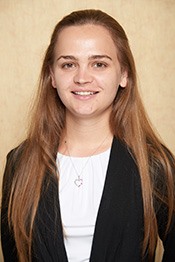Medical Physics Residents Enjoy Brachytherapy Training and Demand More!
S Simiele1*, M Aima2, C Melhus3, S Richardson4, (1) MD Anderson Cancer Center, Houston, TX, (2) Stanford University, Los Altos, CA, (3) Tufts Medical Center, Boston, MA, (4) Swedish Medical Center-Tumor Institute, Seattle, WA
Presentations
SU-H300-IePD-F7-1 (Sunday, 7/10/2022) 3:00 PM - 3:30 PM [Eastern Time (GMT-4)]
Exhibit Hall | Forum 7
Purpose: To assess the current status of brachytherapy training by surveying residents currently enrolled in and recently graduated from CAMPEP-accredited residency programs. A separate survey addresses this question through the lens of residency program directors.
Methods: This AAPM-vetted survey consisted of 26 questions. The questions collected information regarding six areas: (1) Program demographics including the duration of brachytherapy training; (2) Teaching methods; (3) Confidence level of residents for performing clinical tasks associated with different treatment modalities and treatment sites; (4) Caseload; (5) Level of interest in performing brachytherapy at the completion of training; and (6) Level of interest in receiving additional brachytherapy training opportunities.
Results: At the time of abstract submission, 117 responses were received and the majority (61%) were from recent residency graduates. Only 50% of individuals felt they gained enough brachytherapy experience during residency to practice confidently at the completion of their training. Residents cited caseload being too low (55%), pace of clinical procedures (43%), and rotation length (36%) as the primary reasons for not achieving their desired confidence level. The majority (60%) of residents expressed interest in additional training opportunities. Of those, interest was expressed by 65% in selecting brachytherapy for an elective rotation, 83% for performing a brachytherapy rotation at another facility with greater caseload and variety, and 70% for performing post-residency fellowship training. Residents reported enjoying their brachytherapy rotation as much or more than other rotations (94%). The majority (77%) of respondents want to perform brachytherapy procedures in their first position after residency.
Conclusion: Based on the responses, residents enjoy their brachytherapy training and are interested in additional opportunities to increase their caseload and case variety. Interest was high in pursuing training beyond standard brachytherapy rotations and residents may benefit from the development of additional training arrangements, such as rotations through outside institutions or fellowships.
Keywords
Taxonomy
Contact Email



